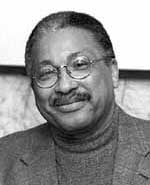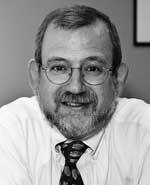A panel of internationally renowned scholars has been assembled to examine the topic of conducting social science research that accurately reflects the heterogeneity and complexity of the U.S. population.
 |
| Jackson (Photo by Martin Vloet, U-M Photo Services) |
Sponsored by the Inter-University Consortium for Political and Social Research (ICPSR), a unit of the Institute for Social Research (ISR), the symposium will begin at 2:15 p.m. Oct. 21 in the Anderson Room of the Michigan Union. The event is being held in conjunction with the ICPSR biennial meeting.
“In an increasingly diverse world, it is more important than ever to have top-quality information and scientifically valid data upon which to base public policies,” says Henry Heitowit, ICPSR educational resources director and one of the organizers.
ISR has been a leader in developing research methods for surveying representative samples of African Americans, Hispanic Americans and other groups that frequently are underrepresented in national surveys.
ISR Director James S. Jackson will deliver the keynote address in which he will describe the scientific challenges and opportunities of surveying the Black American population. Founder of the ISR Program for Research on Black Americans, Jackson directs a number of federally funded cross-national and cross-generational surveys.
In 1980, he conducted the National Survey of Black Americans, the first survey of a nationally representative sample of Black Americans. Designed to clarify the heterogeneity and strengths of the U.S. Black population, rather than to compare Black Americans as a group with whites and interpret any differences as deficits, the study broke new ground in the social sciences.

Conducting the survey required Jackson and colleagues to develop new sampling methods, as well. Locating Blacks in the rural South and urban areas was simple, but a sample that truly was nationally representative needed to include Blacks in mainly white, sparsely populated areas of the country, such as Montana and Wyoming. Knocking on doors would have taken too long and cost too much money. Jackson’s solution simply was to ask whites in the area, who knew exactly where the Black families lived. He named the procedure the Wide Area Sampling Procedure—WASP.
ICPSR Director Myron Gutmann will provide opening remarks at the symposium. Gutmann has studied patterns of assimilation among Americans of Mexican origin compared to a variety of other immigrant origin groups, including Irish, Italians, Poles, Chinese and Puerto Ricans. He also has examined how ethnicity affects family structure and the household circumstances of children.
Following the talks by Jackson and Gutmann, U-M researchers Cleopatra Caldwell, faculty associate in the Research Center for Group Dynamics; Vincent Hutchings, assistant professor of political science and faculty associate in the Center for Political Studies; and David R. Williams, professor of sociology and senior research scientist in the Survey Research Center, will discuss and expand upon related issues.
At 4:30 p.m., a trio of related concurrent sessions will be held on topics including the Black election studies, health, aging and race, and measurements of race. The sessions will be led by U-M and visiting scholars from around the country.

